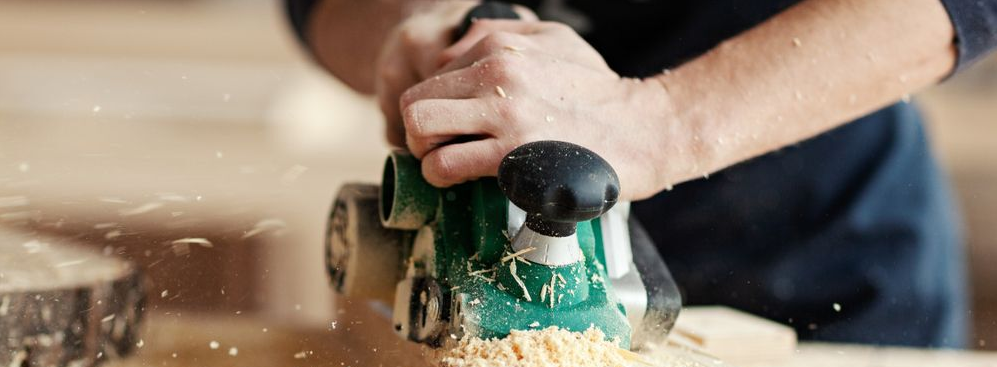Sanding is a common task in woodworking, metalworking, and even some home improvement projects. It’s an essential step in achieving a smooth and polished surface, but it comes with its fair share of challenges, including dust and static. Dust not only creates a messy work environment but can also pose health risks, while static can make sanding more difficult and less efficient. Fortunately, there are ways to minimize both dust and static during the sanding process. In this article, we’ll explore nine valuable tips to help you know how to reduce dust and loading static while sanding.
Tip #1: Choose the Corret Sandpaper
Selecting the appropriate sandpaper is the first step in minimizing dust and static while sanding. Different projects require different grits of sandpaper. A higher grit number indicates a finer abrasive, while a lower grit number is coarser. In general, finer grit sandpaper produces less dust and static compared to coarser options. So, when your primary concern is reducing dust and static, opt for the highest grit that will effectively remove the material. Additionally, consider using sandpaper with anti-static properties, as it can significantly reduce static buildup.
Tip #2: Employ a Dust Collection System
Investing in a dust collection system is one of the most effective ways to control dust while sanding. These systems come in various forms, from shop vacuums with dust extractors to larger dust collectors that can handle a high volume of airborne particles. Ensure that the dust collection system is properly set up and connected to your sanding equipment. The key is to capture dust at its source, preventing it from spreading throughout your workspace.
Tip #3: Wear Appropriate Personal Protective Equipment (PPE)
PPE, such as a dust mask or respirator, safety goggles, and hearing protection, is essential when sanding to protect yourself from both dust and noise. Dust masks or respirators with a high-efficiency particulate air (HEPA) filter can effectively reduce your exposure to airborne particles. Safety goggles protect your eyes from dust, while hearing protection guards against the noise generated by power sanders, which can cause hearing damage over time.
Tip #4: Sand in a Well-Ventilated Area
Working in a well-ventilated area can help disperse dust and reduce its concentration in your workspace. Open windows, doors, or use exhaust fans to promote airflow. If you’re working indoors, consider setting up a fan to direct the dust away from your immediate vicinity. Improved ventilation also helps prevent the accumulation of static electricity.
Tip #5: Wet Sanding
Wet sanding is a technique that involves using a liquid, typically water, to lubricate the sandpaper. This method effectively reduces dust while sanding, as the water binds the dust particles and prevents them from becoming airborne. Wet sanding is particularly useful for fine finishing and smoothing surfaces. Ensure you follow safety precautions when using electrical equipment near water and wear appropriate safety gear.
Tip #6: Use an Anti-Static Solution
Static electricity can be a significant nuisance when sanding. An anti-static solution or static dissipative spray can be applied to both the workpiece and your sanding equipment. These solutions work to neutralize the electrical charge that builds up during sanding, reducing the attraction of dust particles to the surface and the equipment. Be sure to follow the manufacturer’s instructions for proper application.
Tip #7: Control the Speed
The speed at which you operate your sanding equipment can affect both the generation of dust and static. Slower speeds tend to produce less dust and create less static. Adjust the speed of your sander to a level that is effective for the task at hand but not excessive. High speeds can generate more heat and friction, leading to an increase in both dust and static.
Tip #8: Sand with Light, Even Pressure
Applying heavy pressure while sanding can create additional heat and friction, leading to more dust and static. To minimize these issues, use light and even pressure when sanding. This approach not only reduces dust but also prevents the sandpaper from wearing out prematurely, saving you time and money in the long run.
Tip #9: Maintain Your Sanding Equipment
Proper maintenance of your sanding equipment is crucial for reducing dust and static. Regularly clean and inspect your equipment to ensure it’s in good working condition. Worn or damaged components can increase dust production and lead to static issues. Additionally, keep your sandpaper clean by tapping or brushing it during use to dislodge dust and prevent clogging.
Conclusion
Reducing dust and static while sanding is essential for maintaining a clean and safe work environment, as well as improving the quality of your projects. By choosing the right sandpaper, employing dust collection systems, wearing appropriate PPE, working in well-ventilated areas, and utilizing techniques like wet sanding and anti-static solutions, you can significantly minimize the challenges associated with dust and static. With these nine tips in mind, you’ll be well-equipped to tackle your sanding projects more efficiently and effectively, achieving smoother, cleaner results while maintaining a safer and more comfortable workspace.
By BINICABRASIVE AT 15/3


